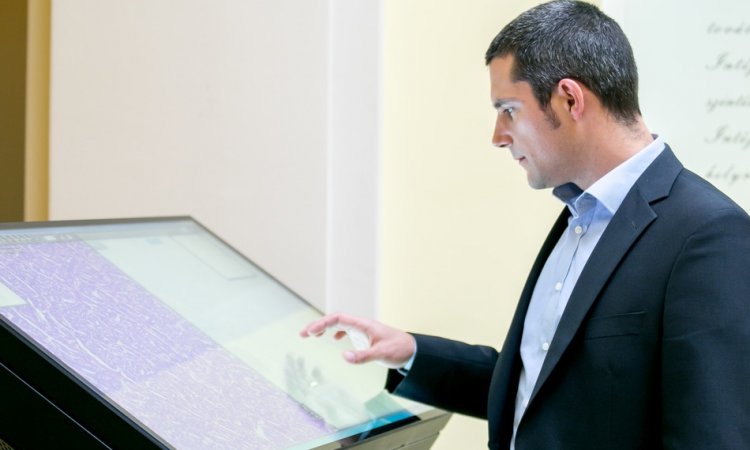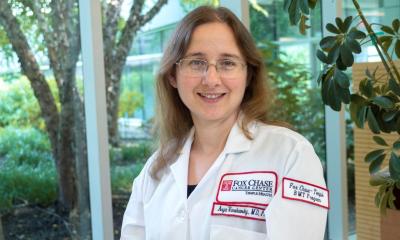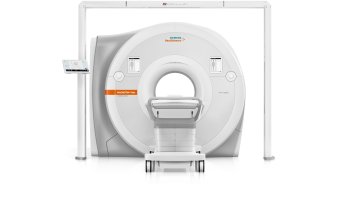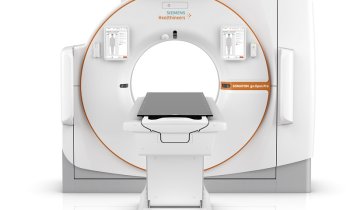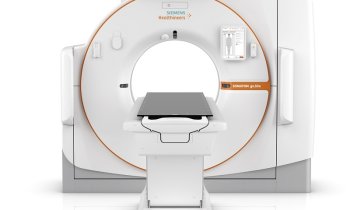
News • Reduction of greenhouse gas emissions
Telemedicine for more sustainable cancer care
Telemedicine visits for cancer care may not only be more convenient and easier to schedule than in-person appointments, they're also better for the planet, new research by Dana-Farber Cancer Institute scientists shows.
Based on an analysis of data from a regional cancer center, the researchers calculate that, nationwide, cancer care that utilizes telehealth and local care would generate 33.1% less greenhouse gas emissions than the traditional model of in-person care, primarily because of reduced travel to medical appointments. The findings presented at the annual meeting of the American Society of Clinical Oncology (ASCO) and published simultaneously in the journal JAMA Oncology, suggest that an approach to care adopted during the Covid-19 pandemic can have significant environmental benefits.
"While health care in the United States provides health benefits to many people, it generates substantial amounts of greenhouse gas emissions that drive climate change and inadvertently harm health," says Andrew Hantel, MD, a faculty member in the Divisions of Leukemia and Population Sciences at Dana-Farber who led the study with Gregory Abel, MD, MPH, a senior physician at Dana-Farber, and Jonathan Slutzman, MD, of Massachusetts General Hospital. "We wanted to explore the potential reductions in emissions that can be achieved with a decentralized approach to cancer care that includes telehealth. To do so, we used data generated during the 'natural experiment' of the pandemic, when care shifted from an in-person to a telemedicine-preferred model."
Telemedicine, and decentralized oncology care [...] can increase the reach of expert care while reducing travel, time, and cost for patients. But they also have the potential to add rather than replace visits
Andrew Hantel
The researchers calculated the amount of carbon dioxide emitted per visit-day at Dana-Farber during two time periods: March-December 2020, when the pandemic prompted the Institute to shift largely to telemedicine; and March 2015-February 2020, when a traditional in-person model was in place. (A visit-day is the combined visits a person has at a healthcare facility in a single day.)
They began by listing all the components of a clinical visit, both in-person and telehealth. For in-person visits, that includes everything that happens from the time a patient leaves home for an appointment until the time they return – such as driving to the hospital, parking the car, taking the elevator to the clinic, using hand sanitizer, using the bathroom, and driving back home. They also factored in the use of electricity for lights and computers, even the paper that covers the exam room table. Using a variety of databases, they then determined the carbon dioxide (CO2) emissions associated with each of these. (For products like hand sanitizers, there is data on the number of emissions used in making and disposing of each of their constituent parts.)
For telehealth visits, there were far fewer aspects to track – mainly, computer and internet usage by the patient and clinician. They found that per visit-day emissions of carbon dioxide at Dana-Farber were 36.4 kilograms lower during the telemedicine period than the in-person period, an 81.3% decline. They then calculated what emissions levels during the pre-pandemic period would have been if telemedicine had been in place and extrapolated it to the whole U.S. population. They found that CO2 emissions would have been reduced by 75.3 million kilograms, a 33.1% drop. (The more modest decline on a national level than at Dana-Farber reflects differences between the national population and those treated at Dana-Farber, such as the higher proportion of patients with rare cancers, Hantel explains. Patients with more uncommon cancers often travel further to receive care, resulting in higher emissions levels.) At the national scale, the 75.3-million-kilogram decline in CO2 corresponds to a modest reduction in human health harms (15.0-47.7 disability adjusted life-years).
"Telemedicine, and decentralized oncology care in general, involve a complex balance of risks and benefits that vary across the population," Hantel observes. "On the plus side, they can increase the reach of expert care while reducing travel, time, and cost for patients. But they also have the potential to add rather than replace visits, which may be difficult for older adults and those without good internet connections, and in some cases may reduce clinicians’ ability to appropriately diagnose and treat. Our findings add another layer to this conversation, showing that emissions reduction is an additional benefit of this approach to care."
Source: Dana-Farber Cancer Institute
12.06.2024



